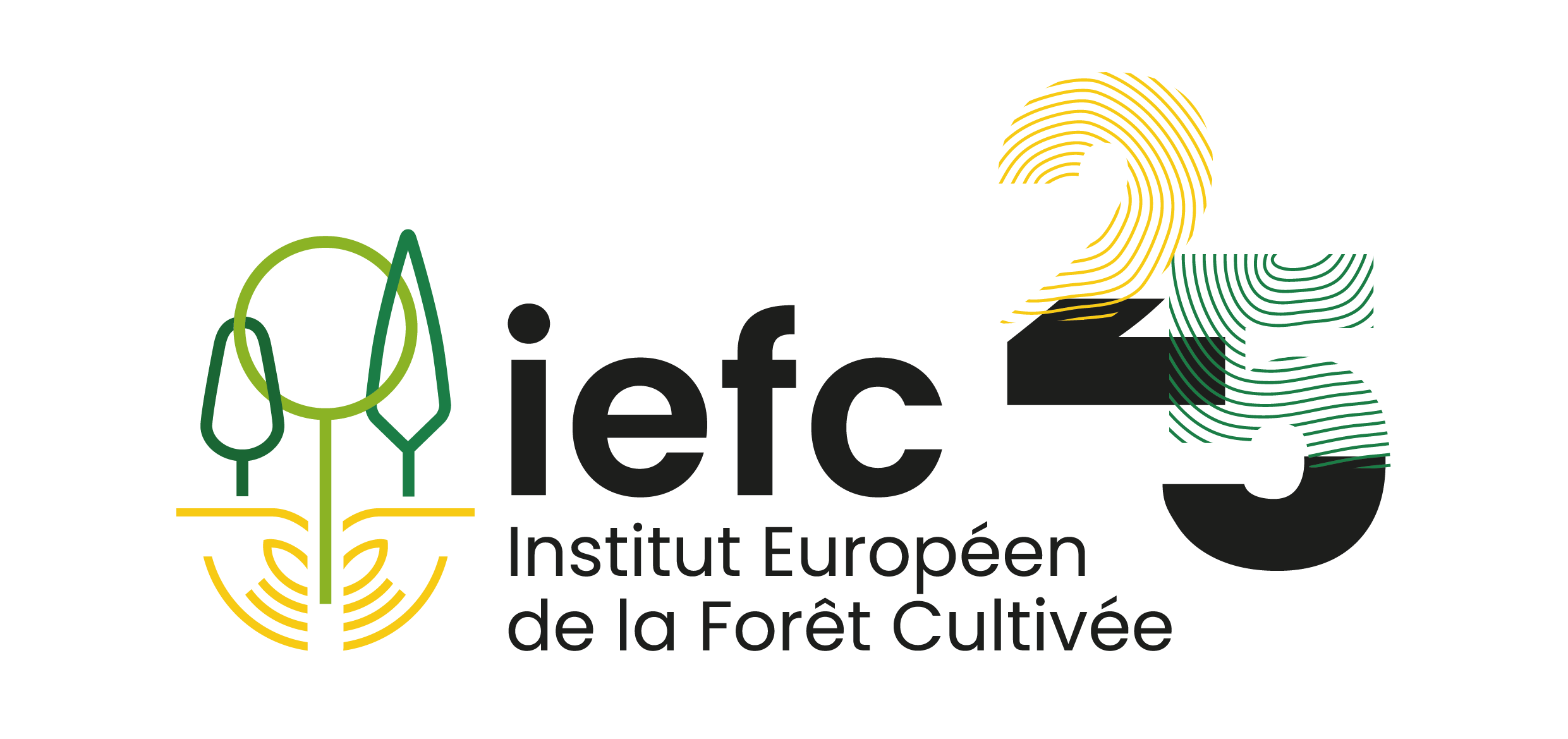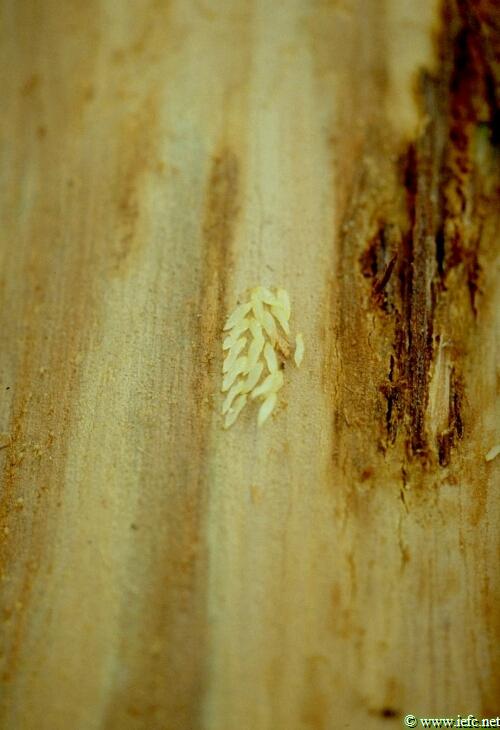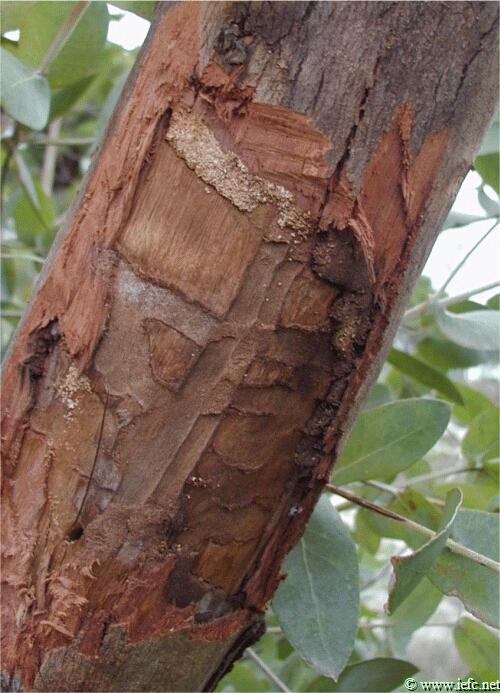Eucalyptus longhorned borer
Phoracantha semipunctata (F.) (Coleoptera, Cerambycidae)
Host tree
Eucalyptus and other Myrtaceae.
Identification
- From May to August, presence of plates of long white eggs (a few eggs to over a 100 ) on the trunk under dead bark slices or in small cavities (Photo 1).
- Grey swellings on the trunk caused by larval galleries under the bark.
- Presence of white-yellow, robust and slightly flattened larvae in the galleries.
- Intense reddish exudes on the trunk (phenols) as tree response to attack.
- Yellowing of the leaves, followed by tree die-back.
- Oval holes (approx. 1 cm) on the trunk after emergence of adult beetles (Photo 3).
- Typical long-horned, 16 to 30 mm long, dark red beetles, present on the trunk under old, released bark (Photo 4).
Damage
- High risk of tree death at the end of the year of attack. Tree losses are most important in stands growing in inappropriate sites.
- If the tree survives, wood quality is degraded by presence of larval galleries.
Biology
- Normally there is one generation per year. In hot summers there can be an incomplete second generation with adults emerging in September (no danger from resulting larvae).
- Adults are present mainly from May to September. They are active at sunset and during the night. Severe attacks occur from June to August. Beetles are attracted to stessed trees.
- Larvae feed under the bark until they reach the last stage. Near the end of winter and beginning of spring the mature larvae bore a pupal chamber deep into the wood.
- A few larvae can kill a tree.
- Adults are attracted to stressed trees and freshly cut logs, that can therefore be used as efficient traps.
Risk factors
- Stressed trees are more prone to attacks. Therefore, during dry years many trees can be killed.
Distribution
- Originally from Australia, but has invaded most regions where Eucalyptus is grown, including the whole southern Europe.
Pest management
Monitoring
- Use of log-traps (8 logs of about 2 m long) placed at low densities inside plantations (1 trap per 50 ha) and with glue on the logs to catch the adults (Photo 4).
- Use of flight interception traps baited with fresh eucalyptus leaves.
Preventive measurements
- Plant eucalyptus trees in appropriate sites, mainly with above 600 mm yearly rainfall.
- Avoid water stress in the stand.
Curative control
- Remove all infested trees before spring to avoid new attacks.
- Starting in early June, mass trapping with log-traps (1 trap per 20 ha density), during adult flight period.
- Mass release of egg parasitoid Avetianella longoi (Hymenoptera: Encirtydae) during adult flight period (Photo 4).
- Use of entomopathogenic fungi as Beauveria bassiana (generalist and therefor less effective than egg parasitoid).
- Improvement of larval predation by woodpeckers and egg predation by ants.
Climate change
- Water stress of eucalypt trees plays a crucial role in the colonisation success, larval survival and growth of P. semipunctata. Therefore, the predicted increase of drought in southern Europe is likely to favour attacks by the beetle if forestry practices are not being adapted.




